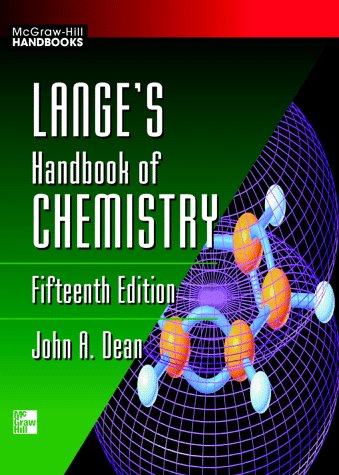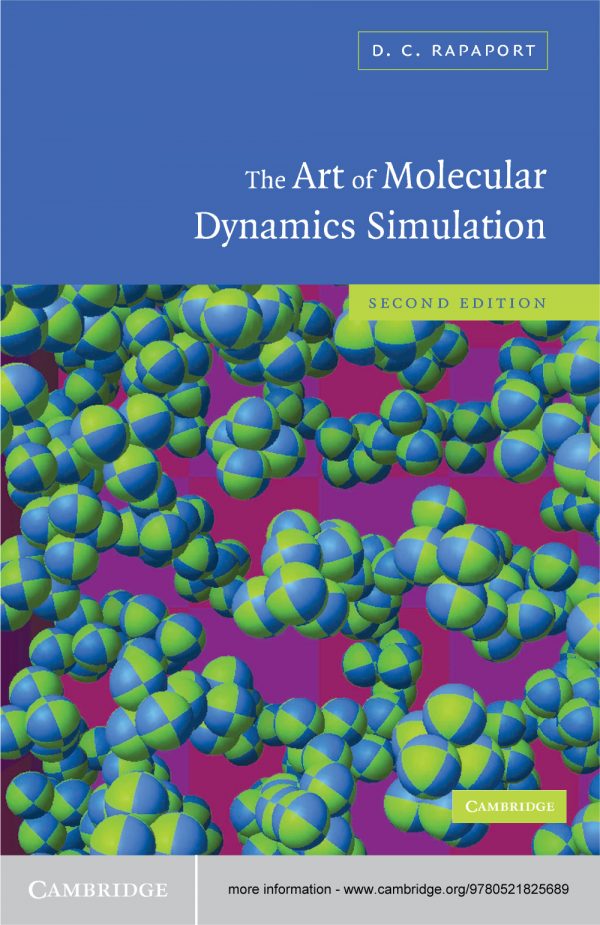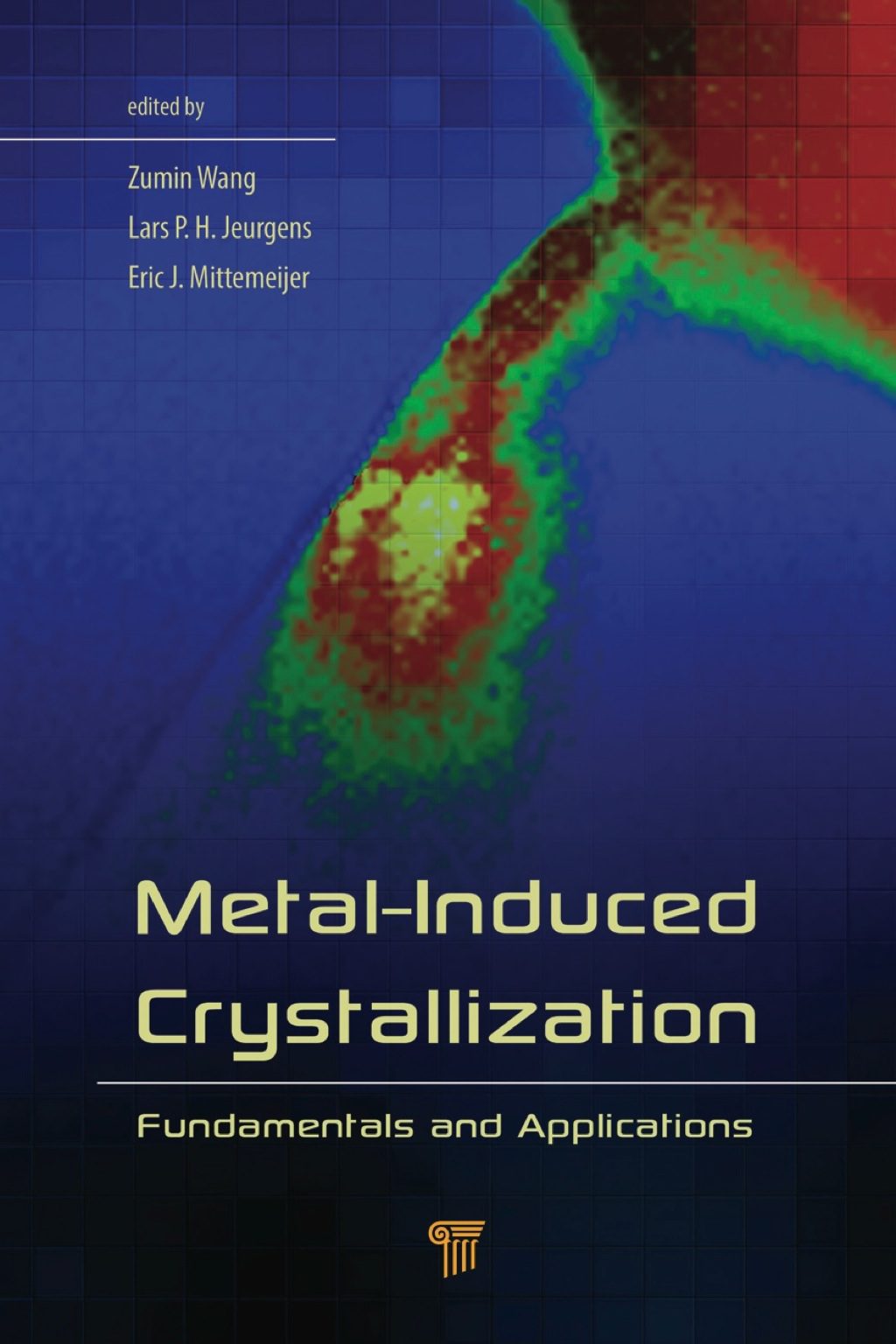John A. Dean9780070163843, 0070163847
Table of contents :
Acknowledgments……Page 3
About the Editor……Page 4
Preface to the Fifteenth Edition……Page 5
Preface to the Fourteenth Edition……Page 8
Preface to the First Edition……Page 11
Table of Contents……Page 13
1.1.1 Nonfunctional Compounds……Page 14
Table 1.1 Names of Straight-Chain Alkanes……Page 15
Table 1.2 Fused Polycyclic Hydrocarbons……Page 21
Table 1.3 Specialist Nomenclature for Heterocyclic Systems……Page 24
Table 1.4 Suffixes for Specialist Nomenclature of Heterocyclic Systems……Page 25
Table 1.5 Trivial Names of Heterocyclic Systems Suitable for Use in Fusion Names……Page 26
Table 1.6 Trivial Names for Heterocyclic Systems That Are Not Recommended……Page 29
1.1.2 Functional Compounds……Page 30
Table 1.7 Characteristic Groups for Substitutive Nomenclature……Page 31
Table 1.8 Characteristic Groups Cited Only as Prefixes in Substitutive Nomenclature……Page 32
Table 1.9 Functional Class Names Used in Radicofunctional Nomenclature……Page 35
1.1.3 Specific Functional Groups……Page 36
Table 1.10 Retained Trivial Names of Alcohols and Phenols with Structures……Page 37
Table 1.11 Names of Some Carboxylic Acids……Page 43
Table 1.12 Parent Structures of Phosphorus-Containing Compounds……Page 49
1.1.4 Stereochemistry……Page 52
1.1.5 Chemical Abstracts Indexing System……Page 62
Table 1.13 Names and Formulas of Organic Radicals……Page 64
Table 1.14 Empirical FormulaIndex of Organic Compounds……Page 71
Table 1.15 Physical Constants of Organic Compounds……Page 88
2. General Information, Conversion Tables, and Mathematics……Page 358
Table 2.1 Fundamental Physical Constants……Page 360
Table 2.2 Physical and Chemical Symbols and Definitions……Page 363
Table 2.3 Mathematical Symbols and Abbreviations……Page 380
Table 2.4 SI Prefixes……Page 381
Table 2.5 Greek Alphabet……Page 382
Table 2.6 Abbreviations and Standard Letter Symbols……Page 383
Table 2.7 Conversion Factors……Page 392
Table 2.8 Temperature Conversion Table……Page 411
2.1.2 Density and Specific Gravity……Page 423
2.1.3 Barometry and Barometric Corrections……Page 427
Table 2.9 Barometer Temperature Correction – Metric Units……Page 429
Table 2.10 Barometric Latitude-Gravity Table – Metric Units……Page 432
Table 2.11 Barometric Correction for Gravity – Metric Units……Page 434
Table 2.12 Reduction of the Barometer to Sea Level – Metric Units……Page 435
Table 2.13 Viscosity Conversion Table……Page 439
Table 2.14 Conversion of Weighings in Air to Weighings in Vacuo……Page 440
Table 2.15 Hydrometer Conversion Table……Page 442
Table 2.16 Pressure Conversion Chart……Page 444
Table 2.18 Molar Equivalent of One Liter of Gas at Various Temperatures and Pressures……Page 445
Table 2.19 Factors for Reducing Gas Volumes to Normal (Standard) Temperature and Pressure (760 mmHg)……Page 448
Table 2.20 Values of Absorbance for Percent Absorption……Page 453
Table 2.21 Transmittance-Absorbance Conversion Table……Page 455
Table 2.22 Wavenumber/Wavelength Conversion Table……Page 458
2.2.1 Logarithms……Page 459
Table 2.23 Derivatives and Differentiation……Page 461
Table 2.24 Integrals……Page 462
2.2.2 Surface Areas and Volumes……Page 466
2.2.3 Trigonometric Functions of an Angle alpha……Page 470
2.2.4 Expansion in Series……Page 472
2.3.1 Introduction……Page 474
2.3.3 Representation of Sets of Data……Page 475
Figure 2.10 The Normal Distribution Curve……Page 476
2.3.5 Standard Deviation as a Measure of Dispersion……Page 478
Table 2.26b Areas Under the Normal Distribution Curve from 0 to z……Page 479
2.3.6 Student’s Distribution or t Test……Page 480
Table 2.27 Percentile Values for Student t Distribution……Page 481
2.3.7 Hypotheses About Means……Page 483
2.3.8 The Chi-square (x2) Distribution……Page 485
Table 2.28 Percentile Values for the Chi-square (x2) Distribution……Page 486
2.3.9 The F Statistic……Page 487
Table 2.29 F Distribution……Page 488
2.3.10 Curve Fitting……Page 490
2.3.11 Control Charts……Page 494
Bibliography……Page 495
3.1.1 Writing Formulas……Page 496
3.1.2 Naming Compounds……Page 498
3.1.4 Anions……Page 501
3.1.6 Salts and Functional Derivatives of Acids……Page 503
Table 3.1 Trivial Names Retained for Acids……Page 504
3.1.7 Coordination Compounds……Page 505
3.1.8 Addition Compounds……Page 506
Table 3.2 Physical Constants of Inorganic Compounds……Page 507
Table 3.3 Synonyms and Mineral Names……Page 556
4.1 Elements……Page 559
Table 4.1 Electronic Configuration and Properties of the Elements……Page 560
Table 4.2 Ionization Energy of the Elements……Page 564
Table 4.3 Ionization Energy of Molecular and Radical Species……Page 566
Table 4.4 Electron Affinities of Elements, Molecules, and Radicals……Page 582
4.4 Electronegativity……Page 586
4.5.1 Atom Radius……Page 587
Table 4.6 Atom Radii and Effective Ionic Radii of Elements……Page 588
4.5.2 Ionic Radii……Page 592
Table 4.7 Covalent Radii for Atoms……Page 593
Table 4.9 Bond Lengths between Carbon and Other Elements……Page 594
Table 4.10 Bond Lengths between Elements Other than Carbon……Page 597
Table 4.11 Bond Dissociation Energies……Page 599
Table 4.12 Bond Dipole Moments……Page 611
Table 4.13 Group Dipole Moments……Page 612
Table 4.14 Spatial Orientation of Common Hybrid Bonds……Page 614
Figure 4.1 Crystal Lattice Types……Page 615
Table 4.16 Table of Nuclides……Page 616
Table 4.17 Work Functions of the Elements……Page 638
Table 4.18 Relative Abundances of Naturally Occurring Isotopes……Page 639
5. Physical Properties……Page 643
Table 5.1 Solubility of Gases in Water……Page 645
Table 5.2 Solubilities of Inorganic Compounds and Metal Salts of Organic Acids in Water at Various Temperatures……Page 651
Table 5.3 Vapor Pressure of Mercury……Page 666
Table 5.4 Vapor Pressure of Ice in Millimeters of Mercury……Page 668
Table 5.5 Vapor Pressure of Liquid Ammonia, NH3……Page 669
Table 5.6 Vapor Pressure of Water……Page 670
Table 5.7 Vapor Pressure of Deuterium Oxide……Page 671
5.2.1 Vapor-Pressure Equations……Page 672
Table 5.8 Vapor Pressures of Various Inorganic Compounds……Page 673
Table 5.9 Vapor Pressures of Various Organic Compounds……Page 681
Table 5.10 Boiling Points of Water……Page 699
Table 5.11 Binary Azeotropic (Constant- Boiling) Mixtures……Page 700
Table 5.12 Ternary Azeotropic Mixtures……Page 719
Table 5.13 Compositions of Aqueous Antifreeze Solutions……Page 725
5.4.1 Propylene Glycol-Glycerol……Page 728
Table 5.14 Density of Mercury and Water……Page 729
5.5.1 Density of Moist Air……Page 730
5.5.2 Specific Gravity Corrections for the Buoyant Effect of Air……Page 731
Table 5.16 Viscosity and Surface Tension of Various Organic Substances……Page 732
Table 5.17 Dielectric Constant (Permittivity) and Dipole Moment of Various Organic Substances……Page 747
Table 5.18 Viscosity, Dielectric Constant, Dipole Moment, and Surface Tension of Selected Inorganic Substances……Page 772
Table 5.19 Refractive Index, Viscosity, Dielectric Constant, and Surface Tension of Water at Various Temperatures……Page 776
5.6.1 Refractive Index……Page 777
5.6.3 Dipole Moments……Page 778
5.6.5 Viscosity……Page 779
Table 5.22 Aqueous Sucrose Solutions……Page 780
Table 5.23 Properties of Combustible Mixtures in Air……Page 781
Table 5.24 Thermal Conductivities of Gases as a Function of Temperature……Page 790
Table 5.25 Liquid Thermal Conductivity of Various Substances……Page 793
Table 5.26 Thermal Conductivity of Various Solids……Page 796
Table 5.27 Compressibility of Water……Page 797
Table 5.28 Mass of Water Vapor in Saturated Air……Page 798
Table 5.29 Van der Waals’ Constants for Gases……Page 799
Table 5.30 Triple Points of Various Materials……Page 810
5.9.1 Some Physical Chemistry Equations for Gases……Page 811
6.1 Enthalpies and Gibbs Energies of Formation, Entropies, and Heat Capacities……Page 815
6.1.1 Some Thermodynamic Relations……Page 816
Table 6.1 Enthalpies and Gibbs Energies of Formation, Entropies, and Heat Capacities of Organic Compounds……Page 819
Table 6.2 Heats of Fusion, Vaporization, and Sublimation and Specific Heat at Various Temperatures of Organic Compounds……Page 865
Table 6.3 Enthalpies and Gibbs Energies of Formation, Entropies, and Heat Capacities of the Elements and Inorganic Compounds……Page 895
Table 6.4 Heats of Fusion, Vaporization, and Sublimation and Specific Heat at Various Temperatures of the Elements and Inorganic Compounds……Page 938
6.2 Critical Phenomena……Page 956
Table 6.5 Critical Properties……Page 957
7. Spectroscopy……Page 973
7.1 X-Ray Methods……Page 974
Table 7.1 Wavelengths of X- Ray Emission Spectra in Angstroms……Page 975
Table 7.2 Wavelengths of Absorption Edges in Angstroms……Page 977
Table 7.3 Critical X-Ray Absorption Energies in keV……Page 980
Table 7.4 X-Ray Emission Energies in keV……Page 982
Table 7.6 Interplanar Spacings for K alpha1 Radiation, d versus 2 theta……Page 986
Table 7.7 Analyzing Crystals for X- Ray Spectroscopy……Page 987
Table 7.8 Mass Absorption Coefficients for K alpha1 Lines and W L alpha1 Line……Page 988
7.2 Ultraviotet-Visible Spectroscopy……Page 990
Table 7.9 Electronic Absorption Bands for Representative Chromophores……Page 991
Table 7.10 Ultraviolet Cutoffs of Spectrograde Solvents……Page 992
Table 7.11 Absorption Wavelength of Dienes……Page 993
Table 7.12 Absorption Wavelength of Enones and Dienones……Page 994
Table 7.14 Primary Bands of Substituted Benzene and Heteroaromatics……Page 995
Table 7.15 Wavelength Calculation of the Principal Band of Substituted Benzene Derivatives……Page 996
Table 7.16 Fluorescence Spectroscopy of Some Organic Compounds……Page 997
7.4 Flame Atomic Emission and Absorption, Eletrothermal Atomic Absorption, Argon Induction Coupled Plasma, Fluorescence……Page 1000
Table 7.18 Detection Limits in ng/ mL……Page 1001
Table 7.19 Sensitive Lines of the Elements……Page 1006
7.4.1 Some Common Spectroscopic Relationships……Page 1010
Table 7.20 Absorption Frequencies of Single Bonds to Hydrogen……Page 1013
Table 7.21 Absorption Frequencies of Triple Bonds……Page 1019
Table 7.22 Absorption Frequencies of Cumulated Double Bonds……Page 1021
Table 7.23 Absorption Frequencies of Carbonyl Bands……Page 1022
7.5.2 Position of Carbonyl Absorption……Page 1025
Table 7.24 Absorption Frequencies of Other Double Bonds……Page 1026
Table 7.25 Absorption Frequencies of Aromatic Bands……Page 1029
Table 7.26 Absorption Frequencies of Miscellaneous Bands……Page 1030
Table 7.27 Absorption Frequencies in the Near Infrared……Page 1036
Table 7.28 Infrared Transmitting Materials……Page 1039
Table 7.29 Infrared Transmission Characteristics of Selected Solvents……Page 1040
Table 7.30 Raman Frequencies of Single Bonds to Hydrogen and Carbon……Page 1043
Table 7.31 Raman Frequencies of Triple Bonds……Page 1048
Table 7.32 Raman Frequencies of Cumulated Double Bonds……Page 1049
Table 7.33 Raman Frequencies of Carbonyl Bands……Page 1050
Table 7.34 Raman Frequencies of Other Double Bonds……Page 1051
Table 7.35 Raman Frequencies of Aromatic Compounds……Page 1054
Table 7.36 Raman Frequencies of Sulfur Compounds……Page 1056
Table 7.37 Raman Frequencies of Ethers……Page 1057
8. Electrolytes, Electromotive Force, and Chemical Equilibrium……Page 1111
8.1 Activity Coefficients……Page 1112
Table 8.1 Individual Activity Coefficients of Ions in Water at 25°C……Page 1113
Table 8.2 Approximate Effective Ionic Radii in Aqueous Solutions at 25°C……Page 1114
Table 8.4 Individual Ionic Activity Coefficients at Higher Ionic Strengths at 25°C……Page 1115
Table 8.6 Solubility Product Constants……Page 1116
8.2.1 Proton-Transfer Reactions……Page 1127
Table 8.7 Proton Transfer Reactions of Inorganic Materials in Water at 25°C……Page 1128
Table 8.8 Values of Organic Materials in Water at 25°C p……Page 1134
Table 8.9 Selected Equilibrium Constants in Aqueous Solution at Various Temperatures……Page 1183
Table 8.10 Properties of Common Acid- Base Solvents……Page 1190
Table 8.11 Values for Proton- Transfer Reactions in Nonaqueous Solvents p……Page 1191
8.2.2 Formation Constants of Metal Complexes……Page 1192
Table 8.12 Cumulative Formation Constants for Metal Complexes with Inorganic Ligands……Page 1193
Table 8.13 Cumulative Formation Constants for Metal Complexes with Organic Ligands……Page 1198
8.3.1 Standard Reference pH Buffer Solutions……Page 1214
Table 8.14 National Bureau of Standards (U. S.) Reference pH Buffer Solutions……Page 1215
8.3.2 Standards for pH Measurement of Blood and Biological Media……Page 1216
Table 8.16 Composition and pH Values of Buffer Solutions……Page 1217
Table 8.18 pH* Values for Buffer Solutions in Alcohol-Water Solvents at 25°C……Page 1219
Table 8.19 pH Values of Biological and Other Buffers for Control Purposes……Page 1220
Table 8.20 Potentials of Reference Electrodes in Volts as a Function of Temperature……Page 1223
Table 8.21 Potentials of Reference Electrodes (in Volts) at 25°C for Water – Organic Solvent Mixtures……Page 1224
Table 8.22 Values of 2.3026RT/F at Several Temperatures……Page 1225
Table 8.23 Indicators for Aqueous Acid-Base Titrations……Page 1226
Table 8.24 Mixed Indicators……Page 1228
Table 8.25 Fluorescent Indicators……Page 1230
Table 8.26 Selected List of Oxidation-Reduction Indicators……Page 1232
Table 8.27 Potentials of the Elements and Their Compounds at 25°C……Page 1234
Table 8.28 Potentials of Selected Half-Reactions at 25°C……Page 1247
Table 8.29 Overpotentials for Common Electrode Reactions at 25°C……Page 1250
Table 8.30 Half-Wave Potentials of Inorganic Materials……Page 1251
Table 8.31 Half-Wave Potentials (vs. Saturated Calomel Electrode) of Organic Compounds at 25°C……Page 1256
Table 8.32 Limiting Equivalent Ionic Conductances in Aqueous Solutions……Page 1267
Table 8.33 Standard Solutions for Calibrating Conductivity Vessels……Page 1270
Table 8.34 Electrical Conductivity of Various Pure Liquids……Page 1271
Table 8.35 Equivalent Conductivities of Electrolytes in Aqueous Solutions at 18°C……Page 1273
8.7.1 Common Conductance Relations……Page 1278
9. Physicochemical Relationships……Page 1280
Table 9.1 Hammett and Taft Substituent Constants……Page 1281
Table 9.2 pK and Rho Values for Hammett Equation……Page 1285
Table 9.3 pK and Rho Values for Taft Equation……Page 1286
Table 9.4 Special Hammett Sigma Constants……Page 1287
10. Polymers, Rubbers, Fats, Oils, and Waxes……Page 1288
10.1 Polymers……Page 1289
10.2.4 Coupling Agents……Page 1291
10.2.6 Foaming Agents (Chemical Blowing Agents)……Page 1292
Table 10.1 Plastic Families……Page 1293
10.2.11 Vulcanization and Curing……Page 1294
10.3.2 Acrylics……Page 1295
10.3.3 Alkyds……Page 1296
10.3.6 Cellulosics……Page 1297
10.3.7 Epoxy……Page 1298
10.3.8 Fluorocarbon……Page 1299
10.3.10 Melamine Formaldehyde……Page 1300
10.3.12 Polyamides……Page 1301
10.3.15 Polyester……Page 1302
10.3.17 Polyolefins……Page 1303
10.3.18 Poly(phenylene Sulfide)……Page 1304
10.3.20 Silicones……Page 1305
10.3.21 Styrenics……Page 1306
10.3.24 Vinyl……Page 1307
10.3.25 Urea Formaldehyde……Page 1308
Table 10.2 Properties of Commercial Plastics……Page 1309
10.4.3 Chlorosulfonated Polyethylene……Page 1345
10.4.7 cis-Polybutadiene Rubber (BR)……Page 1346
10.4.11 (Z)-Polyisoprene (Synthetic Natural Rubber)……Page 1347
10.4.15 Styrene-Butadiene Rubber (GRS, SBR, Buna S)……Page 1348
10.4.16 Urethane……Page 1349
Table 10.3 Properties of Natural and Synthetic Rubbers……Page 1350
Table 10.4 Resistance of Selected Polymers and Rubbers to Various Chemicals at 20°C……Page 1351
Table 10.5 Gas Permeability Constants (10 10 P) at 25°C for Polymers and Rubbers……Page 1353
Table 10.7 Constants of Fats and Oils……Page 1356
Table 10.8 Constants of Waxes……Page 1359
11. Practical Laboratory Information……Page 1361
Table 11.1 Cooling Mixtures……Page 1363
Table 11.2 Molecular Lowering of the Melting or Freezing Point……Page 1364
Table 11.3 Drying Agents……Page 1365
Table 11.4 Solutions for Maintaining Constant Humidity……Page 1366
Table 11.5 Concentration of Solutions of H2 SO4 , NaOH, and CaCl2 Giving Specified Vapor Pressures and Percent Humidities……Page 1367
Table 11.6 Relative Humidity from Wet and Dry Bulb Thermometer Readings……Page 1368
Table 11.7 Relative Humidity from Dew Point Readings……Page 1369
Table 11.8 Organic Solvents Arranged by Boiling Points……Page 1370
Table 11.9 Molecular Elevation of the Boiling Point……Page 1373
Table 11.10 Substances Which Can Be Used for Heating Baths……Page 1375
Table 11.11 Solvents of Chromatographic Interest……Page 1376
Table 11.12 Solvents Having the Same Refractive Index and the Same Density at 25°C……Page 1378
Table 11.13 McReynolds’ Constants for Stationary Phases in Gas Chromatography……Page 1381
Table 11.14 Characteristics of Selected Supercritical Fluids……Page 1386
11.4.2 Chromatographic Behavior of Solutes……Page 1387
Table 11.15 Typical Performances in HPLC for Various Conditions……Page 1391
11.4.3 Ion-Exchange (Normal Pressure, Columnar)……Page 1392
Table 11.16 Guide to Ion-Exchange Resins……Page 1393
Table 11.17 Relative Selectivity of Various Counter Cations……Page 1397
Table 11.18 Relative Selectivity of Various Counter Anions……Page 1398
Table 11.19 Gravimetric Factors……Page 1401
Table 11.20 Elements Precipitated by General Analytical Reagents……Page 1427
Table 11.21 Cleaning Solutions for Fritted Glassware……Page 1429
Table 11.23 Membrane Filters……Page 1430
Table 11.25 Tolerances for Analytical Weights……Page 1431
Table 11.26 Heating Temperatures, Composition of Weighing Forms, and Gravimetric Factors……Page 1432
Table 11.27 Primary Standards for Aqueous Acid-Base Titrations……Page 1434
Table 11.28 Titrimetric (Volumetric) Factors……Page 1436
11.6.3 Standard Volumetric (Titrimetric) Redox Solutions……Page 1442
11.6.4 Indicators for Redox Titrations……Page 1443
Table 11.29 Equations for the Redox Determinations of the Elements with Equivalent Weights……Page 1444
11.6.6 Complexometric Titrations……Page 1449
11.6.7 Masking Agents……Page 1452
11.6.8 Demasking……Page 1453
Table 11.30 Standard Solutions for Precipitation Titrations……Page 1454
Table 11.31 Indicators for Precipitation Titrations……Page 1455
Table 11.32 Properties and Applications of Selected Metal Ion Indicators……Page 1456
Table 11.35 Cumulative Formation Constants of Ammine Complexes at 20°C, Ionic Strength 0.1……Page 1457
Table 11.36 Masking Agents for Various Elements……Page 1458
Table 11.38 Common Demasking Agents……Page 1460
Table 11.40 Tolerances of Volumetric Flasks……Page 1462
Table 11.43 Buret Accuracy Tolerances……Page 1463
Table 11.44 Factors for Simplified Computation of Volume……Page 1464
Table 11.46 General Solubility Rules for Inorganic Compounds……Page 1465
Table 11.47 Concentration of Commonly Used Acids and Bases……Page 1466
Table 11.48 Standard Stock Solutions……Page 1467
11.7.1 General Reagents, Indicators, and Special Solutions……Page 1469
Table 11.49 TLV Concentration Limits for Gases and Vapors……Page 1481
Table 11.50 Some Common Reactive and Incompatible Chemicals……Page 1490
Table 11.52 Chemicals Which Polymerize or Decompose on Extended Refrigeration……Page 1496
11.9.1 Temperature and Its Measurement……Page 1497
11.10 Thermocouples……Page 1498
Table 11.55 Thermoelectric Values in Millivolts at Fixed Points for Various Thermocouples……Page 1500
Table 11.56 Type B Thermocouples: Platinum— 30% Rhodium Alloy vs. Platinum— 6% Rhodium Alloy……Page 1502
Table 11.57 Type E Thermocouples: Nickel-Chromium Alloy vs. Copper-Nickel Alloy……Page 1503
Table 11.58 Type J Thermocouples: Iron vs. Copper-Nickel Alloy……Page 1504
Table 11.59 Type K Thermocouples: Nickel-Chromium Alloy vs. Nickel-Aluminum Alloy……Page 1505
Table 11.60 Type N Thermocouples: Nickel— 14.2% Chromium— 1.4% Silicon Alloy vs. Nickel— 4.4% Silicon— 0.1% Magnesium Alloy……Page 1506
Table 11.61 Type R Thermocouples: Platinum— 13% Rhodium Alloy vs. Platinum……Page 1507
Table 11.62 Type S Thermocouples: Platinum— 10% Rhodium Alloy vs. Platinum……Page 1508
Table 11.63 Type T Thermocouples: Copper vs. Copper-Nickel Alloy……Page 1509
Table 11.64 Values of K for Stem Correction of Thermometers……Page 1510
A……Page 1511
B……Page 1516
C……Page 1518
D……Page 1523
E……Page 1525
F……Page 1529
G……Page 1530
H……Page 1531
I……Page 1533
J……Page 1535
L……Page 1536
M……Page 1537
N……Page 1539
O……Page 1541
P……Page 1542
R……Page 1548
S……Page 1550
T……Page 1555
V……Page 1558
W……Page 1559
Z……Page 1560







Reviews
There are no reviews yet.